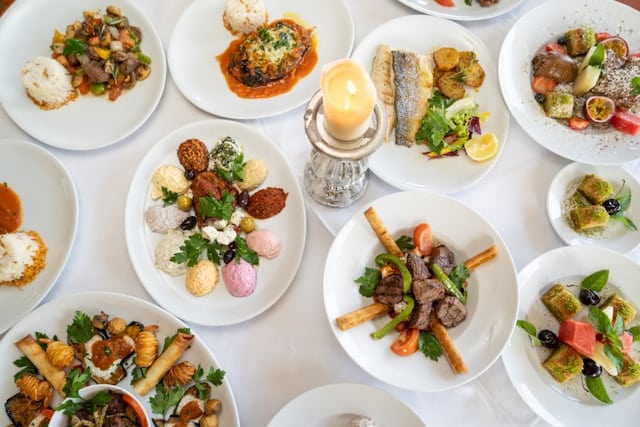Australia’s food scene is a reflection of its multicultural population, rich natural resources, and love for outdoor living. From local markets and coastal seafood to global flavours and native ingredients, food plays a key role in daily life and social connection.
This article explores the diversity of Australian cuisine, where to shop for groceries, how to enjoy popular local dishes, and what food-related customs are worth experiencing in 2025. Whether you’re new to the country or simply looking to learn more, understanding Australia’s food culture can enhance your lifestyle and sense of belonging. In addition to traditional dining options, immersing yourself in the vibrant atmosphere of Australian street food festivals is a must for any food enthusiast. These festivals offer a unique opportunity to taste a wide array of flavors, from gourmet bites to classic favorites, all in one place. Engaging with local vendors and fellow food lovers can also provide deeper insights into Australia’s culinary heritage and innovative future.
Australian Cuisine and Cultural Influences
Australian cuisine is shaped by a blend of British culinary heritage, Indigenous food traditions, and waves of immigration from Asia, the Mediterranean, and the Middle East. This mix has resulted in a dynamic food culture where meat pies, laksa, falafel, and kangaroo steaks can all be found on the same street.
Signature dishes include chicken parmigiana, lamingtons, pavlova, and Vegemite on toast, while Indigenous ingredients such as wattleseed, finger lime, and bush tomato are increasingly featured in modern Australian cooking. Coastal areas are known for fresh seafood—like barramundi, prawns, and oysters—while rural regions are famous for beef and lamb production.
Dining out ranges from casual cafés and takeaway spots to high-end restaurants and multicultural food courts. In most cities, you’ll find a wide range of options representing cuisines from around the world.
Grocery Shopping and Markets
Supermarkets such as Coles, Woolworths, and Aldi are common in urban and regional areas, offering a wide selection of local and international goods. Shoppers can find everything from fresh produce and dairy to halal meats and specialty products. Prices can vary based on location, so it’s helpful to compare weekly specials and use rewards programs for savings.
Many communities also host farmers’ markets, where shoppers can buy seasonal fruits, vegetables, baked goods, and organic items directly from local producers. These markets often support small businesses and provide fresher alternatives to supermarket options.
For culturally specific items, cities like Sydney and Melbourne offer a variety of international grocery stores, including Asian grocers, Middle Eastern butchers, and European delicatessens. Shopping locally is a great way to explore new ingredients and support your community.
Outdoor Dining and BBQ Traditions
Australia’s climate and lifestyle have made outdoor cooking a national pastime. Whether it’s a public park, backyard gathering, or beach picnic, barbecues (BBQs) are central to Australian food culture. Most public parks offer free or coin-operated BBQ facilities, which are commonly used during weekends, holidays, and family celebrations.
Popular BBQ foods include sausages, steaks, grilled vegetables, seafood, and marinated chicken. It’s also common to serve fresh salads, bread rolls, and sauces like tomato relish or aioli.
Learn more: How to Participate in Australia’s Outdoor BBQ Culture
Sharing meals outdoors is a social tradition that reflects Australia’s friendly, relaxed approach to food. It’s also an opportunity to meet new people and experience local customs.
Food Tips for Everyday Living in Australia
Understanding how food works in day-to-day Australian life can help newcomers adjust and locals save time and money. Here are some useful tips:
-
Try local produce like mangoes, avocados, and Australian-grown nuts
-
Use apps for grocery delivery, meal planning, and recipe inspiration
-
Visit multicultural areas for authentic global dishes and specialty items
-
Respect dietary norms, including vegetarian, halal, and gluten-free options commonly available
-
Explore food festivals such as Taste of Melbourne or Night Noodle Markets
-
Take advantage of lunch specials at restaurants, which are often more affordable than dinner
-
Use reusable shopping bags, as most supermarkets charge for single-use plastic bags
-
Join cooking classes to learn about Australian and Indigenous cuisines
-
Check local council rules if you’re planning a BBQ in a public park
For more insights on culture, cuisine, and community life, visit the Remitly Lifestyle and Culture Blog.
FAQ: Food in Australia
1. What time do Australians typically eat meals?
Breakfast is usually between 7–9am, lunch between 12–2pm, and dinner around 6–8pm. Café culture also includes late-morning brunch.
2. Are vegetarian and vegan options common in Australia?
Yes. Most restaurants and supermarkets offer vegetarian, vegan, and plant-based products, particularly in urban centres.
3. Is tap water safe to drink in Australia?
Yes. Tap water is safe to drink across all Australian states and territories unless otherwise indicated by local authorities.
4. Can I bring food to parks and beaches?
Yes. It’s common to bring food for BBQs, picnics, or day trips. Always clean up and follow local rules about littering and fire safety.
5. What are some affordable meals in Australia?
Popular low-cost meals include sandwiches, pasta, stir-fries, and takeaway sushi or Vietnamese rolls, which are widely available in cities.
